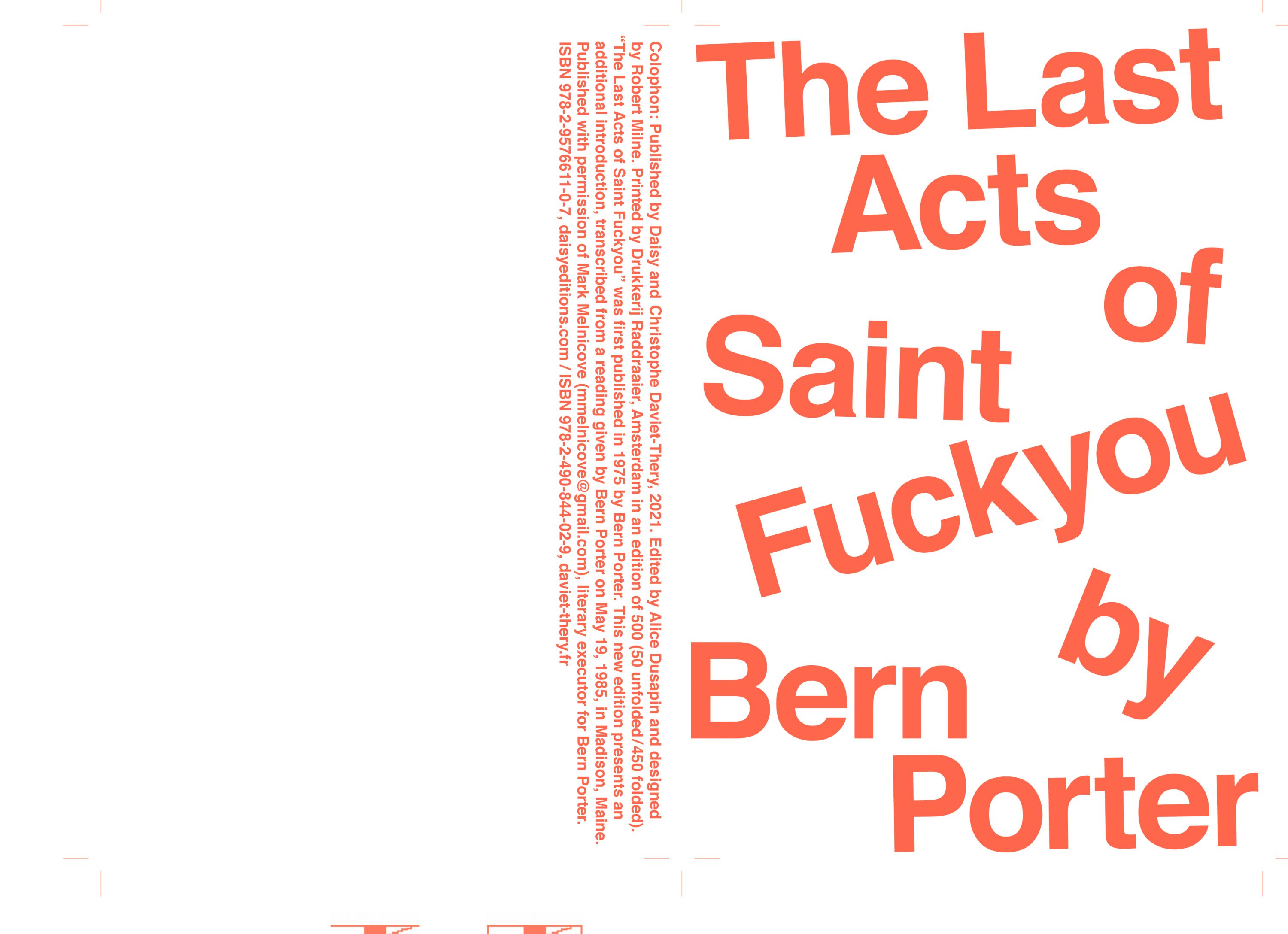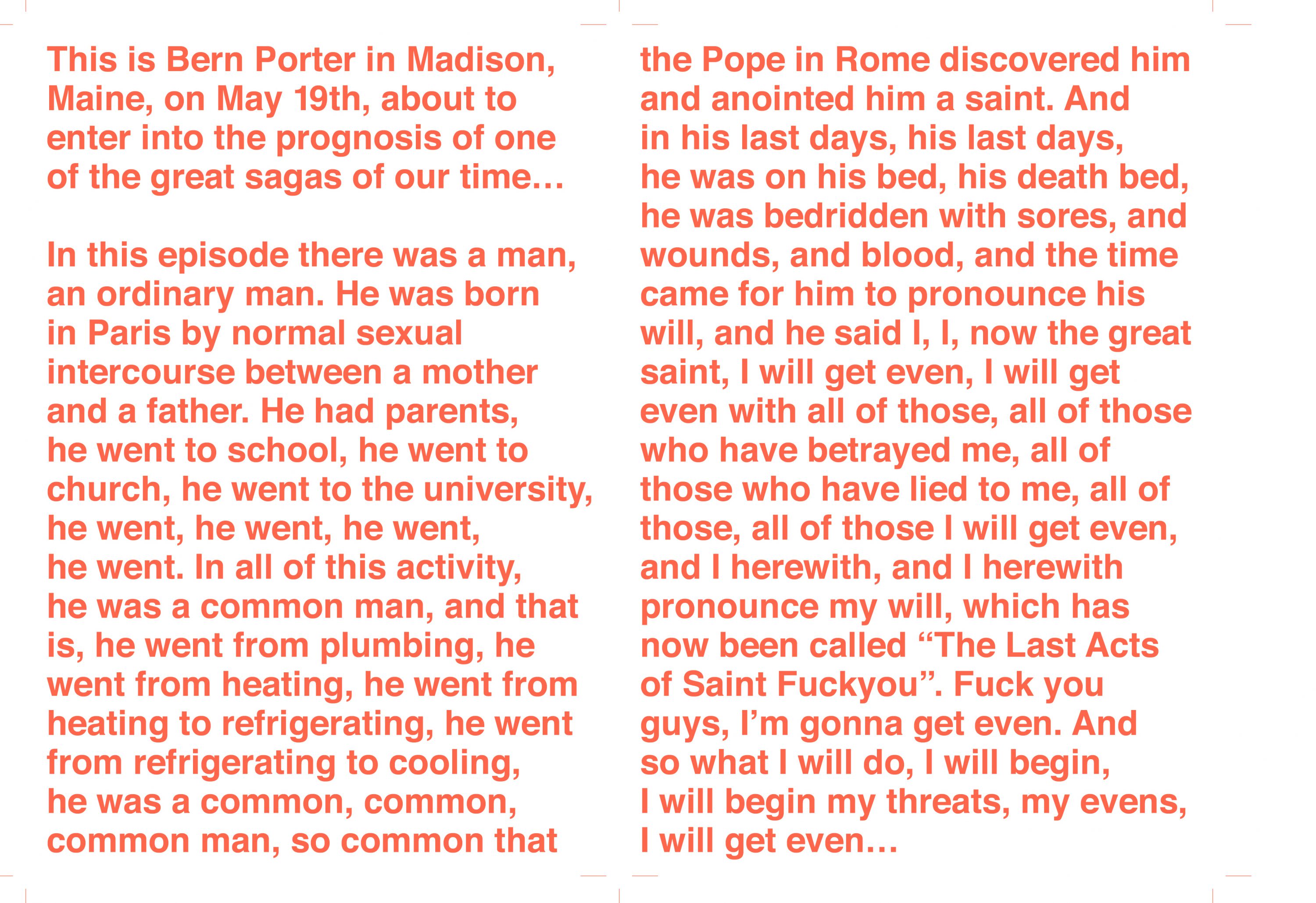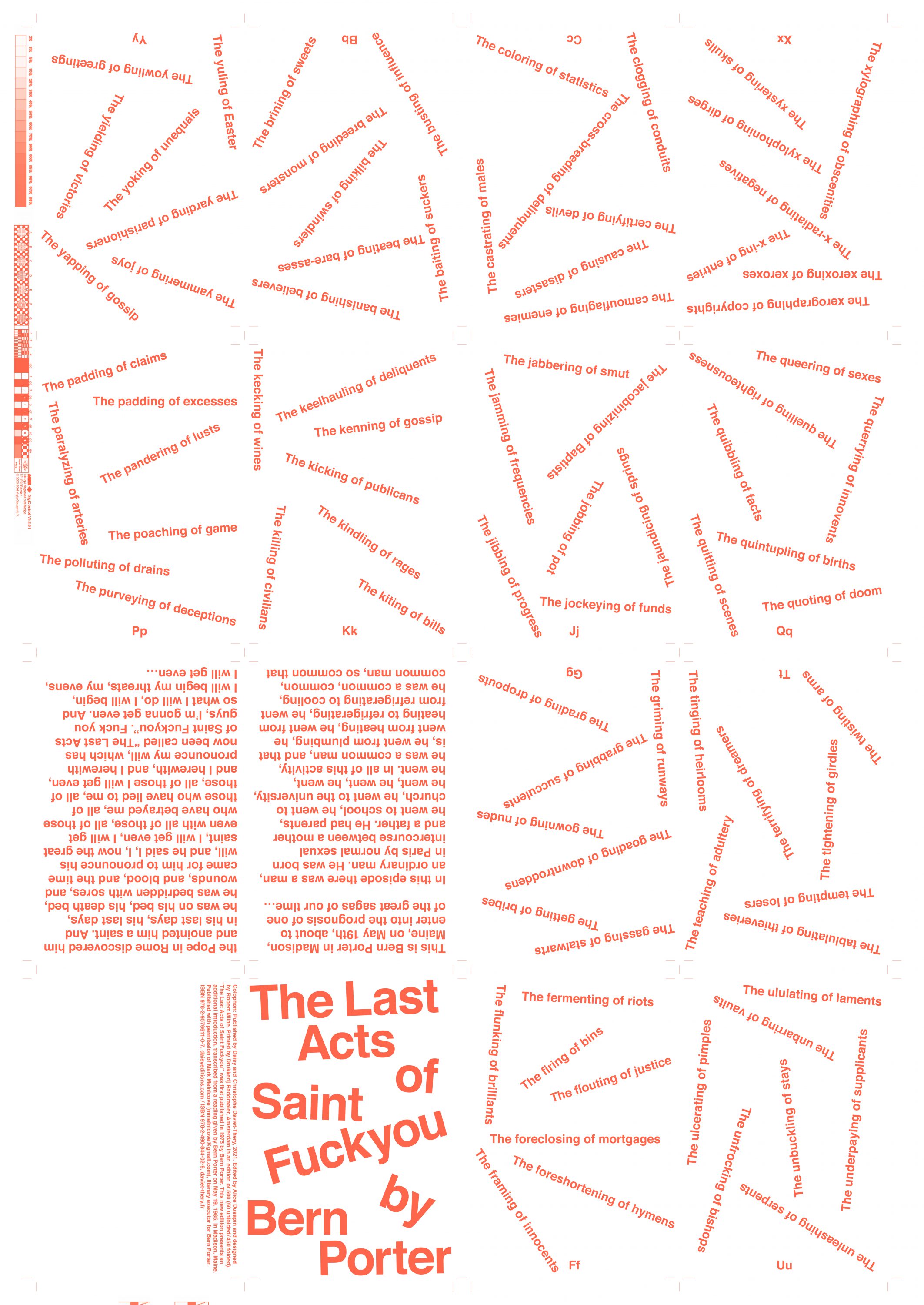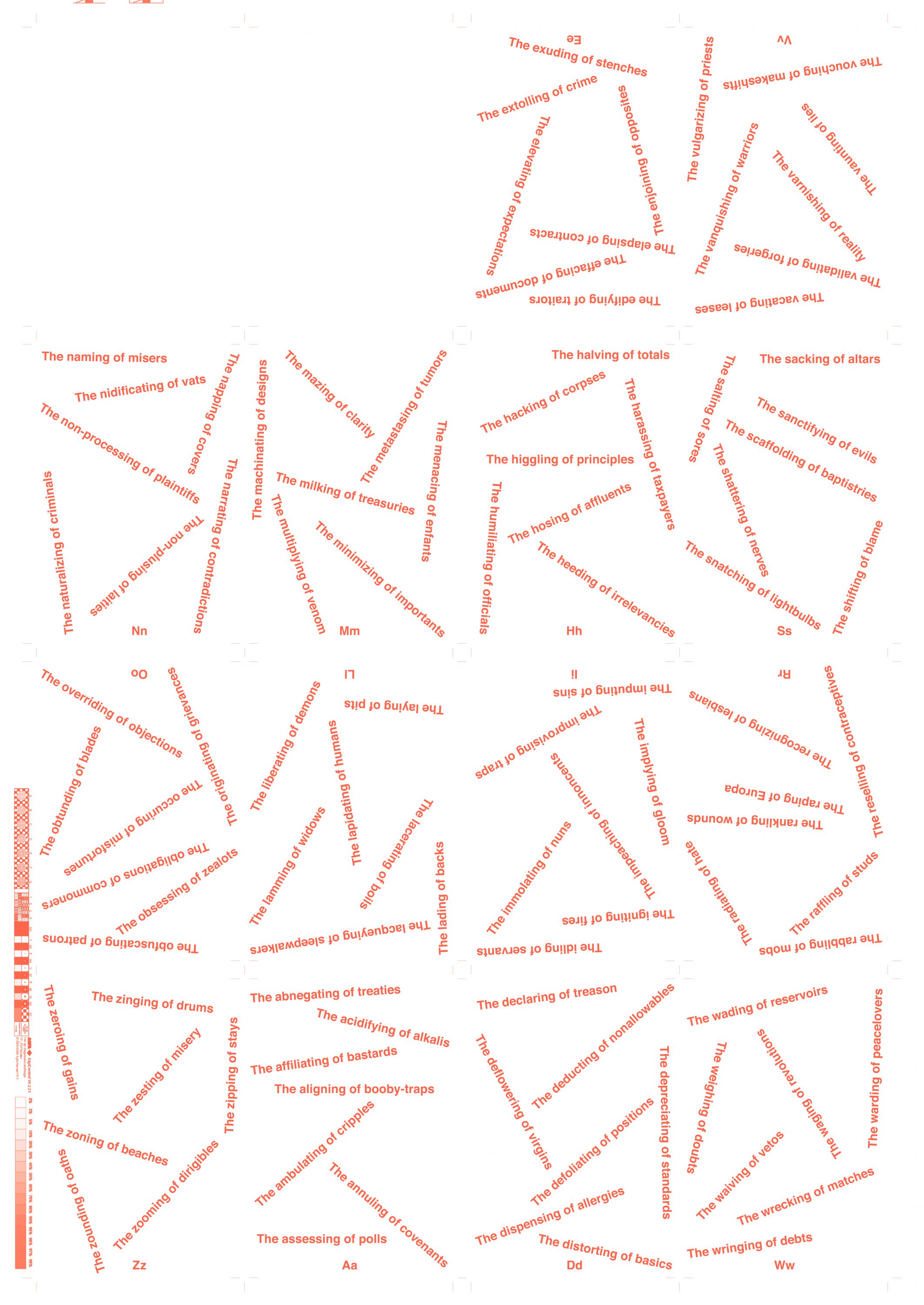



- Edited by Alice Dusapin
- Designed by Robert Milne
- Co-published with Christophe Daviet-Thery, Paris
- 2021, English, Poetry
- 32 pp., 18.5 × 25.5 cm (folded), 51 × 72 cm (unfolded), selfcover, foldout poster
- Edition of 500 (450 folded / 50 unfolded)
- ISBN 978-2-9576611-0-7
A poem first published in 1975 by Bern Porter, presented in alphabetical order, with the same number of acts for each letter. This new edition presents an additional introduction, transcribed from a reading given by Bern Porter on May 19, 1985, in Madison, Maine.
- Aa
- The abnegating of treaties
- The acidifying of alkalis
- The affiliating of bastards
- The aligning of booby-traps
- The ambulating of cripples
- The annuling of covenants
- The assessing of polls
- Zz
- The zeroing of gains
- The zesting of misery
- The zinging of drums
- The zipping of stays
- The zooming of dirigibles
- The zoning of beaches
- The zounding of oaths
Bern Porter (1911–2004) was an American visual poet, writer, artist, publisher, gallery owner and physicist. He is considered a pioneer of the artist book and of found poetry. From 1941 until his death he produced hundreds of incredible books made out of experiments in collage, text and typography. A highly active publisher, he worked with figures including Henry Miller, Kenneth Patchen, Dieter Roth, James Schevill, Robert Duncan and Dick Higgins, and even opened two galleries in Sausalito where he showed work by independent artists from the San Francisco Bay Area from 1947–1950. Very close to Carlo Pitorre (Charles Stanley), Bern was a prolific figure on the mail art scene, sending collages every day by post.
To mention only a preview of the best books he produced or published, here is an extremely partial bibliography: Found Poems (Something Else Press, 1972) ; The Wastemaker 1926–1961 (Abyss Publications, 1972); The Happy Rock, A Book About Henry Miller (Bern Porter, 1945); What are Legends: A Clarification by Dick Higgins (Bern Porter, 1960); What Henry Miller Said and Why it is Important (Walton Press, 1964); I’ve Left (Something Else Press, 1971); The Manhattan Telephone Book (Abyss Publications, 1972); Run On (Bern Porter, 1975); Bern! Porter! Interview! (The Dog Ear Press, 1981); Sweet End (The Dog Ear Press, 1989).
Working to the side, if not the opposite direction, Bern pursued a career as a physicist and a technical writer most of his life, after studying science at Colby College and Brown University between 1929 and 1933. In his early life he got involved with projects such as the invention of the television, the Saturn V rocket for NASA, and the Manhattan Project (the secret national project for the development of the atom bomb), which he always said he immediately renounced upon learning of the bombing of Hiroshima, dedicating the rest of his life to creative pursuits. The facts are not exactly consistent, and Bern might have rearranged some of the dates to relieve himself of the heavy guilt he felt, altering chronology to reflect what he would have liked to have done. What is doubtless, however—to cut out but a page from his complex story—is Bern’s dedication to the found poem: a form he would become one of the greatest masters of, through a lifelong visual quest.